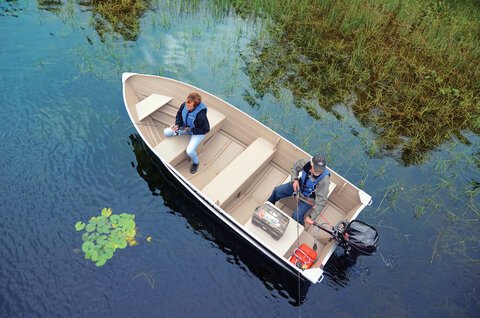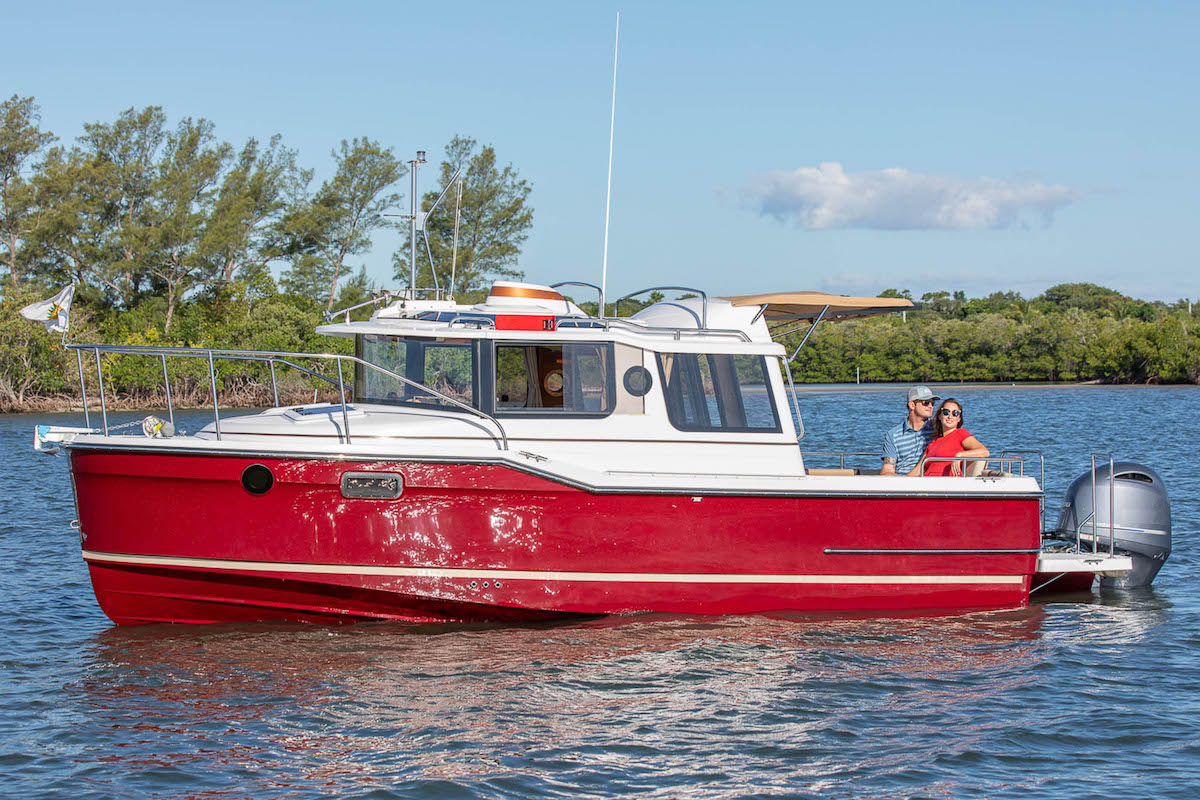Small boat handling is the skill of safely steering, controlling, docking, and operating a boat under 20 feet. Many new boaters learn quickly with the right basics, and a small boat handling course or a few core tips can make a huge difference in confidence on the water.
Learning small boat handling doesn't have to be intimidating. Sure, your first time at the helm might feel awkward, but these vessels are built to be manageable. With some basic skills and common sense, you'll be cruising confidently in no time.
What Counts as a Small Boat?
A small boat is typically under 20 feet. That includes:
- Runabouts and bowriders
- Aluminum fishing boats
- Inflatable RIBs
- Personal watercraft (PWCs)
These boats are easy to trailer, simple to operate, and designed for day trips. Most use outboard motors or jet drives, and in many states, you don't need a special license to drive one.
Safety Basics: Small Boat Handling Tips
Small boats react faster than large boats—great for maneuvering, but mistakes also happen quickly. Key small boat handling tips include:
- Wear a life jacket every time
- Keep a throwable flotation device and a fire extinguisher on board
- Carry a sound-producing device and navigation lights
- Check the weather before leaving, especially in open water
- Understand your boat's capacity plate and never overload
Taking a small-boat handling course is one of the best ways to learn the rules, safety, and emergency procedures. Many states require one before operating a motorized vessel.
Small Boat Handling Tips: Steering & Throttle Control
Boats don't have brakes—steering and throttle are your control system.
Key small boat handling tips:
- Start practicing in calm water
- Notice steering delay and throttle response
- Maintain enough speed for steering control
- Practice figure-eights and circles to learn the turning radius
Most small boats handle best at moderate speeds. Too slow and you lose steering authority; too fast and you can spin out.
Docking Tips for Small Boats
Docking gets easier with practice and patience.
- Approach slowly — way slower than you think
- Use small bursts of throttle, not long accelerations
- Use forward to move ahead, reverse to stop, and neutral between
- Remember: steering in reverse pushes the stern opposite the wheel
Practice reversing and slow-speed control away from the dock before attempting tight spaces.
Weight Distribution and Balance
Small boats are sensitive to weight shifts. To stay stable:
- Seat passengers centrally
- Keep heavy gear low and centered
- Step into the center while boarding
- Avoid people standing on the bow underway
- Adjust trim to match your speed and load
Learning how your boat feels when properly balanced will make every trip smoother and safer.
Common Mistakes to Avoid (Small Boat Handling Tips)
- Avoid jerky steering or throttle changes at speed
- Observe all no-wake zones
- Never operate under the influence
If you still feel nervous, a small boat handling course is the easiest way to build skills and confidence—plus, you'll learn navigation rules and emergency procedures from certified instructors.
Small Boat Handling Q&A
Q: What is small boat handling?
A: Small boat handling is the skill of safely operating and maneuvering a boat under 20 feet, including steering, throttle control, docking, trim, and weight balance.
Q: What is the best way to learn small boat handling?
A: The fastest way to learn is by taking a small boat handling course and practicing slow-speed control in open water.
Q: What are the most important small boat handling tips?
A: Wear a life jacket, approach docks slowly, use short throttle bursts, keep weight centered, and practice steering at different speeds.


